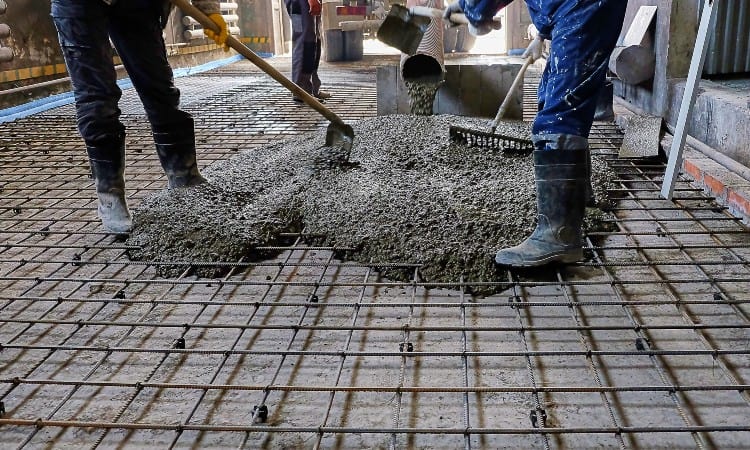
Concrete pavers are an extremely flexible choice that can be installed in various ways. For an organic aesthetic, you could fill any spaces between them with grass or even gravel for improved drainage.
Asphalt may be more durable, but concrete paving is much less costly to maintain and requires no snow shoveling – since its strength makes it ideal for harsh weather conditions.
Use it as a seating area
With concrete slabs Melbourne being such an affordable material to work with, whether its slab is large enough to serve as an entire patio or smaller pavers are used together, concrete is an ideal material for creating seating areas. When combined with patterns and textures it can also look less industrial and more cozy!
Simple herringbone patterns or three-paver designs create the classic cottage garden aesthetic, while adding a patterned runner softens lines of an expansive lawn while drawing attention upward to plants and trees.
Planting can help soften the edges of your paving, and lollipop-style trees such as bay, dwarf umbrella and azaleas work perfectly to do this. As concrete can become slippery when wet, more textural flooring options such as gravel or woven jute rugs might provide additional traction underfoot.
Add a pool
Installing a pool in your outdoor living area is an incredible way to add value and functionality. Enjoying meals or drinks by the water’s edge provides the ideal space for relaxation.
Paving that can withstand salt water and chlorine corrosion makes an excellent material choice for pool surrounds, such as this project which modernised existing paving around a fibreglass pool with brand new pavers.
Cemix Joint Sand can help prevent pavers from shifting during installation and provide an easier laying surface. Meanwhile, commercial grout filled with cement and fine-grained sand (or commercial grout) fills in any gaps between pavers, with an expansion gap being left every 2m for easy expansion of joints in case they shrink during usage.
Stain it
Concrete paver stones can be stained to add a pop of color that makes them stand out, creating something truly distinctive and stunning. While paint may work, staining is more cost-effective and will last longer.
Start by clearing away all furniture, toys and other objects from the concrete surface you plan on staining. Sweep or vacuum to remove as much dust and debris as possible from this area before using TSP cleaner (or non-chemical alternatives) to scrub its surface – these ratios should be listed on its label.
Rinse the concrete thoroughly with a garden hose, and allow it to dry completely before staining it. Work in small sections at a time (using seams as natural divisions). A sprayer works quickly for this task; for tight corners or spaces you may prefer using a large brush instead.
Make it a flooring
Pavers make an excellent alternative to concrete flooring because they flex with the earth rather than cracking in extreme weather conditions, plus repairs are easily achievable.
Professional installation of pavers begins with a bed of jointing sand. Once the pavers have been installed, they should be swept and compacted using a motorized plate compactor for best results.
Fill the gaps between pavers with organic-looking materials such as moss or decorative pebbles (sanded glass or crushed shells are great choices), such as decorative pebbles (moss works particularly well), for an organic appearance. These materials are easy to maintain and will reduce weed growth as well as degradation to the paved area – making it a durable long-term option suitable for walkways and patios.
Add a bit of texture
Textured surfaces add dimension and make concrete paving appear less like an inert slab of cement and more like actual roadway. This can be accomplished by adding exposed aggregate or decorative pebbles – either natural stone or brightly-colored materials will do.
As soon as the concrete has set up, surface texture creation should begin immediately after placement. Flexible concrete can still be worked into different textures using tools like brooms or burlap drags; more intensive equipment like construction bridges or turf drags may also be required to complete this step.
Walttools’ Blasdel stresses the importance of education on all aspects of concrete work, with texturing as being particularly pivotal for success. Pacific Concrete’s Morgan concurred, noting how knowing your tools (wood floats create coarser textures; aluminum floats medium textures; and steel trowels for smooth finishes) is crucial to reaching success in texturing concrete surfaces.